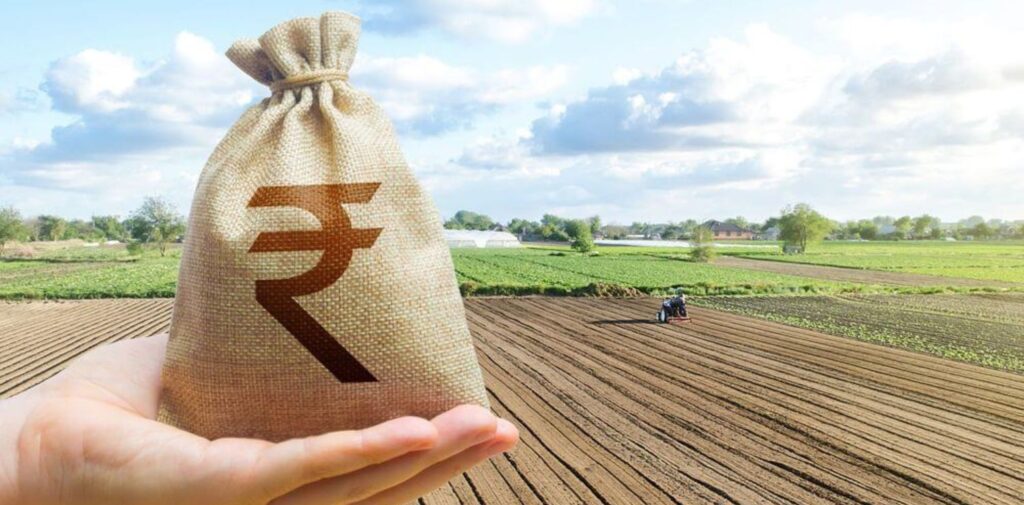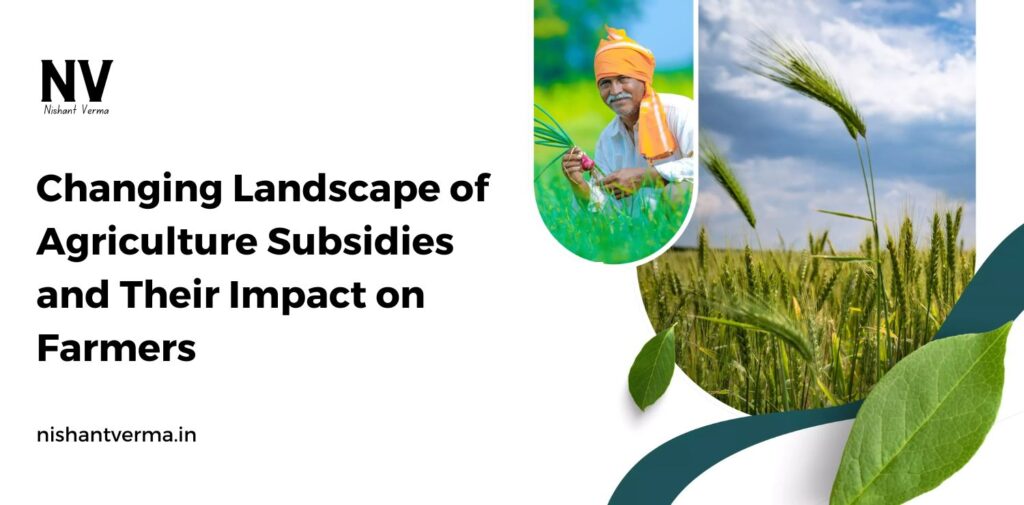Agriculture has always been the backbone of India’s economy. A large portion of the population depends on farming for their livelihood, especially in rural areas. Over the years, the government has provided various subsidies to support farmers, helping them cope with rising costs and ensuring food security for the nation. However, the landscape of agriculture subsidies is changing. New policies, challenges, and shifting priorities are reshaping how these subsidies are designed and distributed. In this article, we’ll look at what agriculture subsidies are, how they’ve evolved over time, and their impact on farmers today.
What Are Agriculture Subsidies?
Agriculture subsidies are financial aids provided by the government to support the agricultural sector. These subsidies can take different forms, such as direct payments, price support, subsidies on fertilizers, seeds, irrigation, and electricity, among others. The main aim of these subsidies is to reduce the financial burden on farmers, increase agricultural production, and ensure that food is affordable for consumers.
For example, when farmers purchase fertilizers, seeds, or pesticides, the government often provides these inputs at lower prices than the market rate. In some cases, the government even provides direct cash support to farmers to help them manage the costs of production. The idea behind these subsidies is to make farming more profitable and help farmers stay afloat in difficult times.

Evolution of Agriculture Subsidies in India
Agriculture subsidies in India have a long history. They were introduced to help farmers deal with challenges like fluctuating prices, poor weather conditions, and the rising costs of agricultural inputs. Initially, subsidies were designed to support food production and make sure there was enough food for the growing population.
In the early years, government support was focused on price support for key crops like wheat and rice. The Food Corporation of India (FCI) bought these crops from farmers at a minimum support price (MSP) to ensure they had a stable market. Over time, subsidies expanded to include fertilizers, irrigation, and electricity, all of which are crucial for increasing crop yield.
The Green Revolution in the 1960s and 1970s was a turning point in India’s agricultural history. During this period, the government heavily subsidized fertilizers, irrigation, and high-yielding seeds to encourage farmers to adopt new farming techniques. This resulted in increased food production, especially in states like Punjab and Haryana. However, it also led to the overuse of chemical fertilizers and depletion of groundwater resources, which became major environmental concerns later on.
In the 1990s, with economic liberalization, the government began to reduce some of the subsidies and move toward more market-driven agricultural policies. Despite these changes, subsidies continued to be an essential part of agricultural policy, but the focus began to shift towards improving the efficiency of subsidy distribution.

Changing Landscape of Agriculture Subsidies
Over the years, the approach to agriculture subsidies has seen significant changes. While subsidies are still important for farmers, the way they are given and the amounts involved have evolved. Here are some key changes that have reshaped the landscape of agricultural subsidies:
- Shift Toward Direct Cash Transfers: One of the major changes in recent years is the shift from input subsidies (like those on fertilizers, electricity, and irrigation) to direct cash transfers. The government has started giving cash directly to farmers under schemes like the PM-Kisan Yojana (Pradhan Mantri Kisan Samman Nidhi). This approach aims to reduce middlemen and ensure that the subsidy reaches the intended beneficiaries. Cash transfers are seen as a more transparent and efficient way to support farmers, as it allows them to use the money as they see fit, without being restricted to specific inputs.
- Focus on Sustainable Practices: The government has also started to emphasize sustainable farming practices in recent years. Environmental concerns, such as soil degradation and water scarcity, have led to a shift away from subsidies that encourage the overuse of chemical fertilizers and water. Instead, subsidies are increasingly being linked to organic farming, water conservation, and renewable energy. Programs like the Pradhan Mantri Krishi Sinchayee Yojana (PMKSY) focus on improving irrigation efficiency, while the National Mission on Sustainable Agriculture (NMSA) promotes organic farming and the use of bio-pesticides.
- Encouraging Crop Diversification: Traditionally, subsidies in India have been focused on a few crops, especially wheat and rice. This has led to overproduction of certain crops and depletion of soil nutrients. In recent years, the government has been encouraging crop diversification through targeted subsidies. This means providing financial incentives for farmers to grow a variety of crops, including pulses, oilseeds, and fruits, rather than relying solely on water-intensive crops like rice and wheat.
- Linking Subsidies to Technology and Innovation: With the rise of digital technology, the government is increasingly using technology to distribute subsidies and provide information to farmers. Apps, online platforms, and SMS services are being used to guide farmers on best practices, weather patterns, and the availability of subsidies. The idea is to make subsidies more accessible and to help farmers make informed decisions about their crops and inputs.
Impact of Changing Subsidy Policies on Farmers
The shift in agriculture subsidy policies has had a mixed impact on farmers across India. While some changes have been positive, others have presented challenges. Let’s take a closer look at both sides.
Positive Impacts
- Financial Support Through Direct Transfers: Direct cash transfers, such as the PM-Kisan Yojana, have provided much-needed financial support to farmers, especially those with small landholdings. These transfers help farmers manage their daily expenses and cope with price fluctuations. The scheme has been especially helpful for marginal and small farmers who do not have easy access to credit or other financial resources.
- Promoting Sustainable Farming: The focus on sustainable agriculture is a positive change, as it encourages farmers to adopt environmentally friendly practices. Over the long term, this can lead to healthier soil, better water management, and reduced dependence on harmful chemicals. It also aligns with global trends toward organic farming and sustainability, which can open up new markets for Indian farmers.
- Better Access to Information: With the use of technology, farmers now have better access to information about subsidies, weather conditions, and crop management. This helps them make more informed decisions about when to plant, how to manage their crops, and how to apply for subsidies. Digital platforms make the process faster and more transparent, reducing the chances of corruption or delays.

Challenges Faced by Farmers
- Delays and Inconsistent Payments: One of the major challenges with direct cash transfers is the delay in payments. Many farmers report delays in receiving funds, which can create financial stress during critical farming periods. Additionally, not all farmers are able to access digital platforms, especially in remote areas with poor internet connectivity. This can leave some farmers out of the subsidy system.
- Unequal Distribution of Subsidies: While subsidies are meant to benefit all farmers, there is often an unequal distribution. Large-scale farmers with access to better resources are more likely to benefit from subsidies, while small farmers may miss out. In some cases, middlemen and corrupt officials siphon off subsidies meant for farmers, leaving them with little help.
- Dependence on Subsidies: One of the concerns with agriculture subsidies is that they may create a dependency on government support. This can reduce the incentive for farmers to adopt innovative practices, improve productivity, or explore alternative income sources. Over-reliance on subsidies may also discourage farmers from addressing long-term issues like climate change or soil health.
- Environmental Costs of Past Subsidy Policies: The heavy focus on subsidies for chemical fertilizers and water-intensive crops in the past has had negative environmental consequences. Groundwater depletion and soil degradation are serious issues in many farming regions, and it will take time to reverse the damage caused by these policies.
Conclusion
The changing landscape of agriculture subsidies in India reflects the country’s evolving approach to farming and food security. While the move toward direct cash transfers, sustainable farming, and technological integration is a positive step forward, challenges like delays, unequal distribution, and environmental concerns remain. Farmers are at the heart of India’s agricultural sector, and it is crucial that policies are designed to address their needs and ensure long-term sustainability. With the right support, farmers can adapt to the changing landscape and continue to contribute to the nation’s growth and prosperity.




